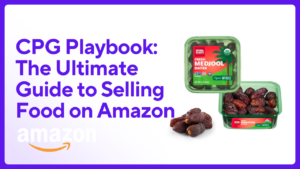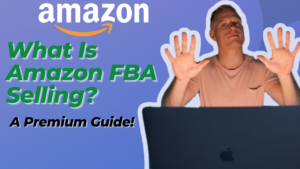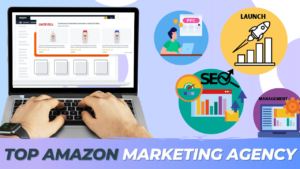
Introduction
You should understand why Amazon is right for your business before you start selling on Amazon for the first time. Amazon’s one of the biggest advantages of selling is its simplicity and it’s great because customers rely on Amazon to benefit from a fast delivery system because their products and services cannot be found anywhere else.
With over $400 billion in annual revenue, 200 million Amazon Prime members globally, and almost 3 billion monthly visitors, Amazon is the most well-known e-commerce platform in the United States and the biggest online retailer in the world. It offers international shipping to more than 130 countries and dominates the online retailer in 28 countries. Selling products on the Amazon marketplace is one of the most common ways for companies to boost and diversify their revenue sources. Make sure your products are listed and available to customers by doing some research before selling on Amazon. When a customer discovers your brand on Amazon SEO services and purchases a product from a third party rather than you, this can result in decreased sales and increased prices for customers who wish to continue doing business with you. Here are the top concerns for brands considering selling on Amazon:
1. Your Products
Not all products need to be offered on Amazon Listing Optimization services. Many companies choose to sell on Amazon because of the logistics features Amazon offers for a fee through its Fulfillment by Amazon (FBA) program. Only products from companies using FBA are eligible for Prime designation and give Prime members free shipping. This is a great incentive to use FBA. Amazon has built one of the most complex high-volume distribution networks in the world, but handling substandard products is more complicated and expensive. Companies have built great businesses online because Amazon has yet to perfect the art of shipping things that don`t easily fit in a small box. Some companies may experience the following threshold issues:
- Some Amazon products are restricted or forbidden in some locations. Alcohol, tobacco goods, lottery, and gambling products are all prohibited. You will need special approval from your country’s governing authority to sell these items on Amazon.
- Amazon isn’t the ideal place to personalize or customize a product for a customer. Some companies rely on data and algorithms to do so, but if you’re in a smaller market or your products require special customization or personalization, Amazon may not be the best option.
- When many similar products are listed on a page, they become a commodity in the minds of customers.
- Not all products are simple or cheap to ship. Delivering is difficult and expensive if a company’s product is particularly large, heavy, or fragile, has a limited shelf life, or requires refrigeration — and shipping via Amazon can be much more so.
2. Competition in Search and Products
Competition is a major concern for brands selling on Amazon especially since the platform features products from different sellers in each product category. As a result, shoppers can search for virtually any item and find thousands of results, including many off-brand items. There are some, but many are counterfeit or inferior brands. Over the past decade, we’ve seen an increasing consumer willingness to purchase private-label, generic, or private-label products across different categories, both online and in physical stores. Identifying products offered in your industry and listed on Amazon is key to understanding the degree of competitiveness, merchandising, and trademarking of product categories. Creating strong brand positioning can help you break through the confusion and thrive on Amazon.
3. Costs of Customer Reach
Amazon is a very cheap platform for reaching customers, but it comes with some important tradeoffs. Amazon’s most important advantage is customer reach. In general, selling on Amazon gives businesses access to more customers. Margin and customer data are the two biggest. Companies need to ensure they have enough of both.
Brands looking to profit from selling products on Amazon as per amazon marketing agency should leverage the direct costs of selling products through the site. Amazon charges brands for its platform and fulfillment services in a variety of ways. Some companies pay Amazon a commission for each sale, while others sell wholesale to Amazon at prices well below retail, but allow Amazon to determine to price and merchandising. increase. Whichever method you choose, you’ll need to deduct advertising-related costs from your unit price to ensure you have enough margin to sustainably sell on Amazon. Keeping unauthorized sellers and counterfeit brands off Amazon can feel like playing a game of moles. Most brands know that collecting customer data is a great way to increase sales, but few know how to do it effectively. Process business transaction platform is done. Brands that want to nurture long-term customer relationships, understand their customer base, and connect directly with their customers may be reluctant to share this information. They view the customer relationship as a transaction and they are pleased with every sale.
4. Maintain Brand Control
To prevent new Amazon sellers from impersonating established brands, the company launched a brand registry system in 2017 to help businesses protect their intellectual property and brand. However, some brands were dissatisfied with the program because each product had to be individually registered by name.
As the world’s largest retailer, Amazon poses a very serious threat to most brands, and selling on Amazon can also make relationships with existing retail partners difficult. Retailers often enter into distribution agreements with brands. Contracts can contain clauses that allow brands to control certain elements of the relationship. The most important is the Minimum Advertised Price (MAP). This effectively means that resellers cannot advertise their products at prices below a set threshold, often preventing them from lowering prices online. Adding Amazon to your list of authorized resellers is relatively easy if you have a policy in place that you can enforce. If the company does not do this, or if an unauthorized third party already has the product in stock and sells it on Amazon, it becomes difficult to maintain control. One way to prevent unwanted sales is to include price controls. This means setting a minimum or maximum price for each product in your catalog. This allows other websites to generate revenue regardless of the price of the product. You can also generate revenue by offering multiple discounts and free shipping deals.
5. The Decision Making
There are many factors to consider when determining a brand’s success on Amazon. If your score is very low, think twice about selling on Amazon. If starting as a seller makes sense, there are a few other things to consider first. Next, you should explore options for independently managing order fulfillment so that you can join other brands on Amazon. Collaborating with other sellers in your niche is a traditional selling method. If a brand requires a more complex strategy than selling on Amazon, two options for selling packaged goods are private label distribution and multi-level marketing programs. Increase your sales from there by implementing these strategies, improving our social media presence, utilizing automation tools to improve fulfillment efficiency, and working with existing customers who require additional products and services.
6. Increase the Possibility of Success
For a brand to be successful on Amazon, it must first be visible on the platform. Here are the ways to optimize your brand exposure on Amazon:
- The title should be informative and relevant so that your product ranks high in search results. The same is true for product page content. Brands should choose relevant keywords for their product pages. Consumers seek out pages that are less cluttered and repetitive. Product pages should be visually appealing, easy to read and contain useful information for brands. It should contain images, videos, and a Q&A section that tell the story of your product. Engage in content that strongly describes brand attributes and enhances the quality of its product descriptions.
- Reviews are required for a brand to acquire customers, but customers cannot be acquired without reviews. Some brands explicitly solicit reviews via newsletters, social media, and Amazon review requests. Amazon penalizes companies suspected of using these tactics, so brands cannot request or pay for positive reviews. There are several methods for obtaining reviews.
- Use Amazon Vine, especially for new and unknown products. The purpose is to present them to the tester.
- Include a paper card requesting a review of the package.
- Find influencers and encourage them to include videos alongside product page reviews.
- Contact the top Amazon reviewers in each category.
- Adjust product prices to get more reviews.
- See Amazon Fulfillment (FBA). Brands submit their inventory to Amazon’s fulfillment centers under this program, and Amazon handles the rest. You will be able to use Prime and this allows brands to measure quickly without having to invest in additional logistics and order fulfillment capabilities. The disadvantages are high fees and stringent shipping requirements for box sizes, labels, and barcodes.
- Build your own “Amazon Store.” This is an especially important strategy for brands with multiple products. Customize your online storefront with your Web address, allowing customers to showcase their products, tell your brand’s story, and easily browse all of your products. A branded storefront also protects you from counterfeit goods and unauthorized sellers.
- To grant exclusive distribution rights, collaborate with authorized third parties.
- Amazon ads also help improve rankings.
Final Thoughts
Selling on Amazon is an excellent way to reach new customers, raise brand awareness, and boost sales through the Amazon platform. It also lowers the cost of acquiring and retaining customers. One of the advantages of selling on Amazon is that it allows brands to increase their visibility and attract customers while driving traffic to their websites. You can use Amazon as a marketing platform to increase sales and boost the success of your brand. Making strategic product range decisions to achieve the best results is the key to performance.
If you sell products on Amazon, you should think about selling directly through your website as well. You can use the Amazon platform to acquire and recognize customers who have already visited your website and made a purchase decision by selling directly from your website. Customers also benefit from buying from a well-known e-commerce site with competitive pricing and a solid reputation for customer service. You can benefit from increased sales and overall profits.








